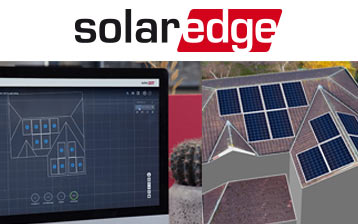SolarEdge changed the already simple design rules based in practice only on the minimum and maximum number of optimizers in series and the maximum power that they could support.
Inverter ≤ 5 kW: removed the power limit of the single series of 5.7 kWp
From now on, for the single-phase inverters of the HD Wave series with size less than / equal to 5 kW of whatever models standard, with integrated EV-charger or StorEdge with battery input, the power limit of the single series of 5.7 kWp is removed .
10 kW inverter: removed the power limit of the single string which stood at 11.25 kW
The same thing also for three-phase inverters from 10 kW downwards, the power limit of the single string is removed, which stood at 11.25 kW. Also included here are StorEdge inverters with 48V battery input.
Inverters connected to Delta-type grids are excluded from this rule
In this way, the design can be even easier and faster, in practice:
- single string minimum 6 optimizers P404, P485, P505, P601 or 8 optimizers P370, P401, P500 for any DC power for single-phase inverters up to 5 kW;
- minimum 14 optimizers P404, P485, P505, P601 for three-phase inverters up to 10 kW, with the exception of 3 kW where 13 are enough.
- single string with at least 16 optimizers P370, P401, P500 on all three-phase inverters from 10 kW and below including 3 kW for any DC power.
Keep in mind the usual rules for optimizer module coupling:
- Isc current less than the maximum allowed by the optimizer
- Voc voltage calculated at the minimum design temperature lower than the maximum allowed by the optimizer
- STC power of the module lower than the maximum allowed by the optimizer, taking into account that the power tolerance must be a maximum of + 5%
In this way, in addition to saving time in the design phase, the costs of the BOS (balance of system) and assembly costs are also reduced.





